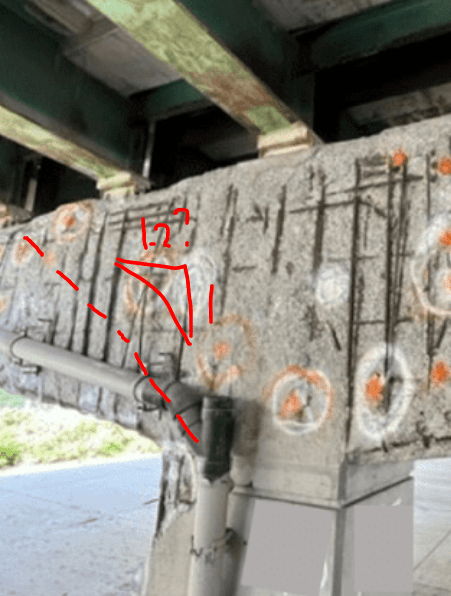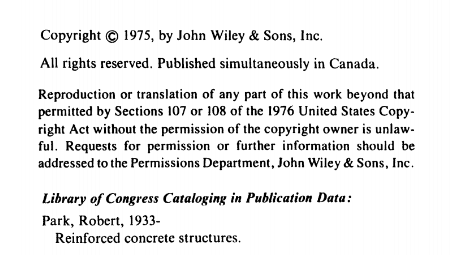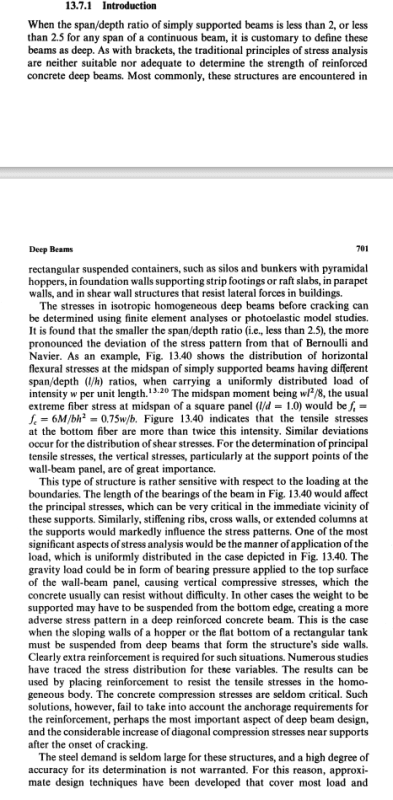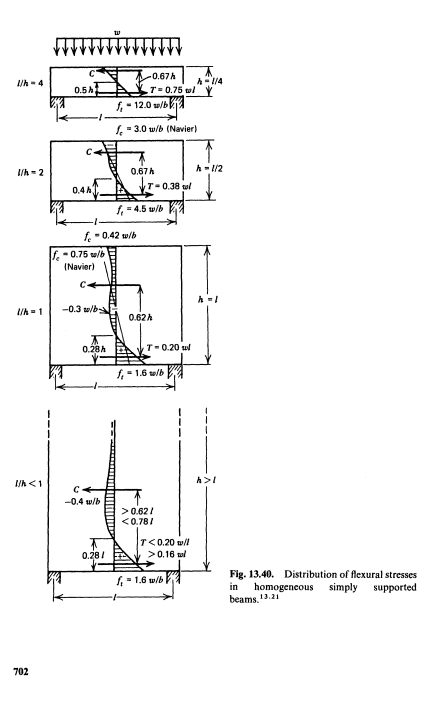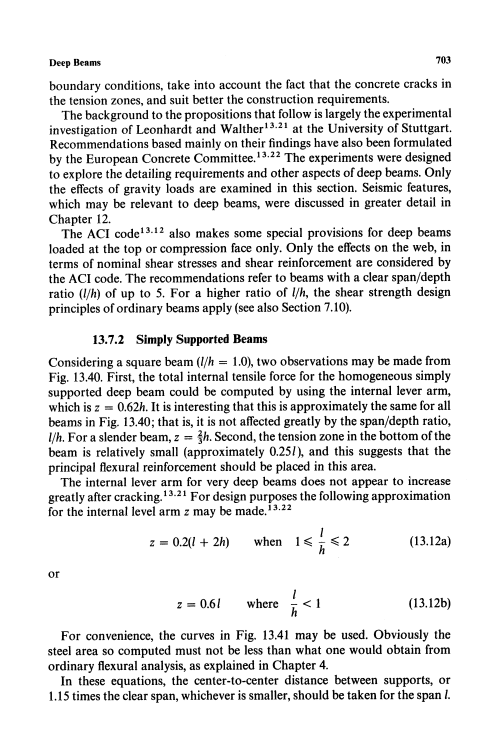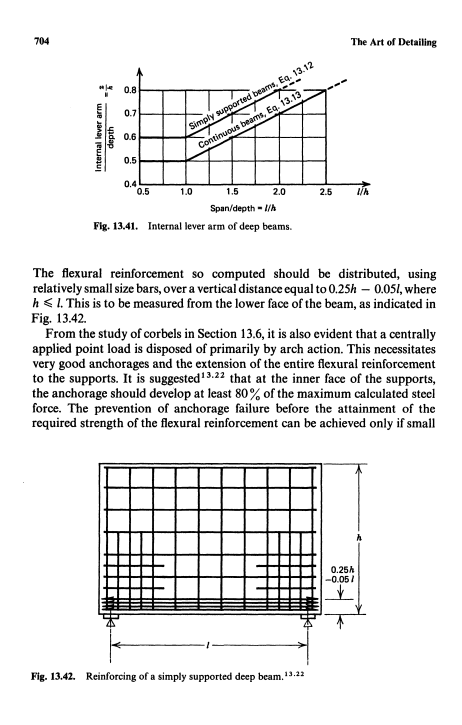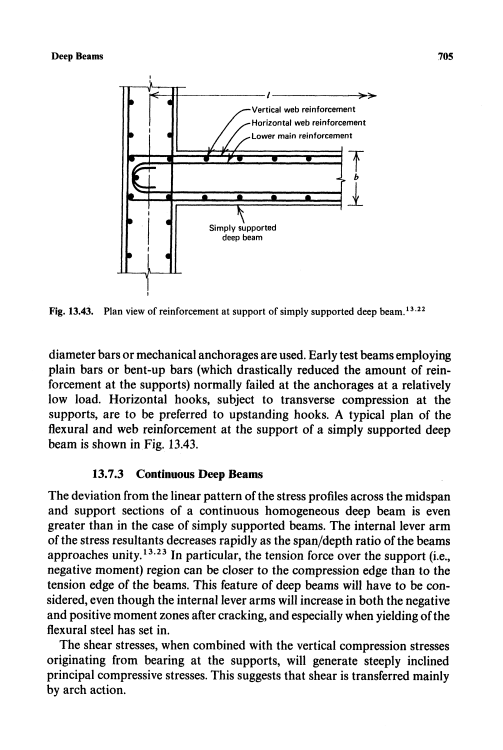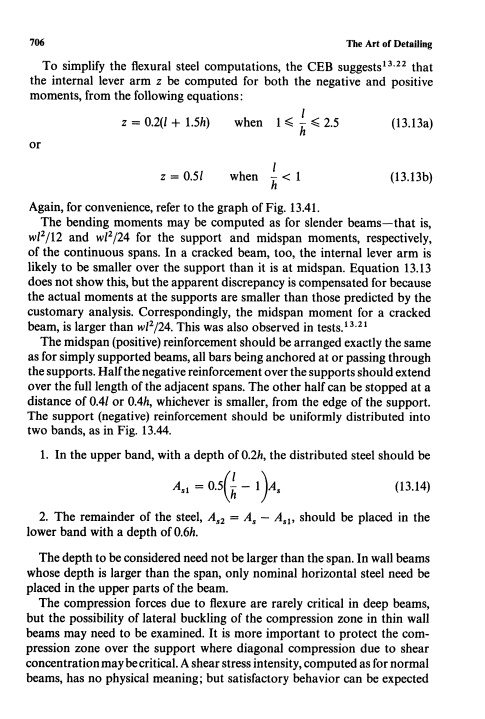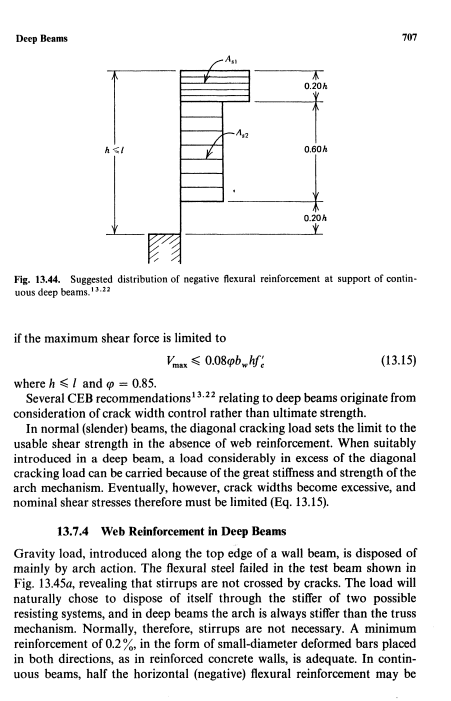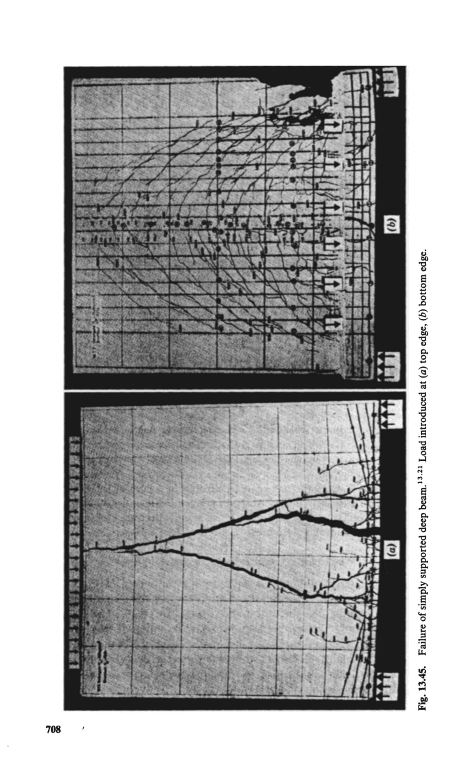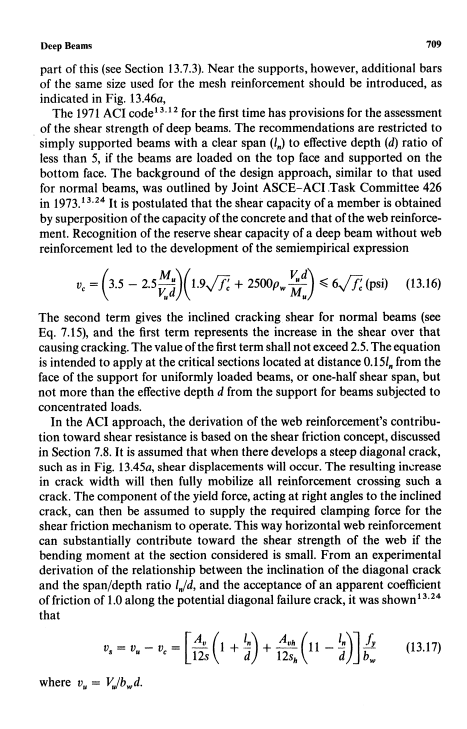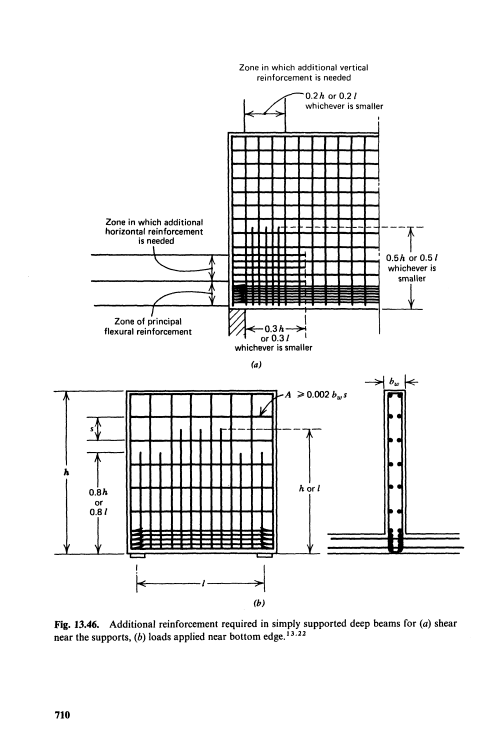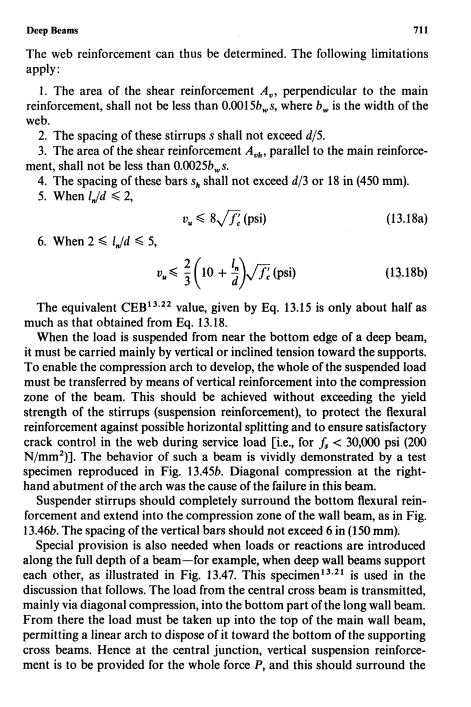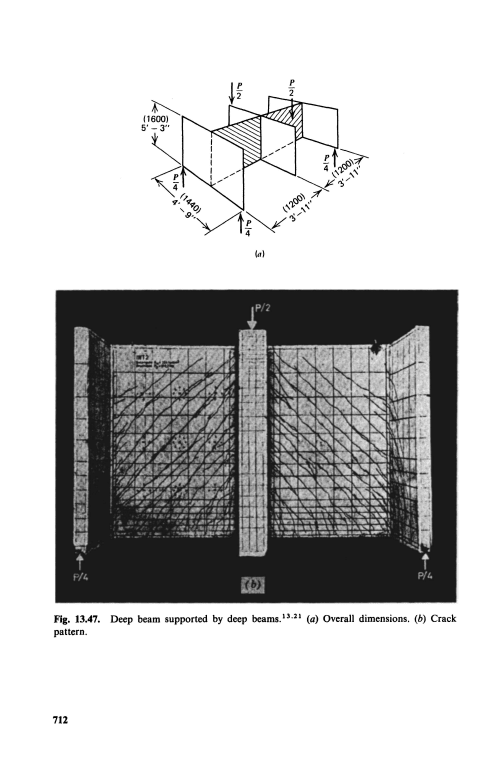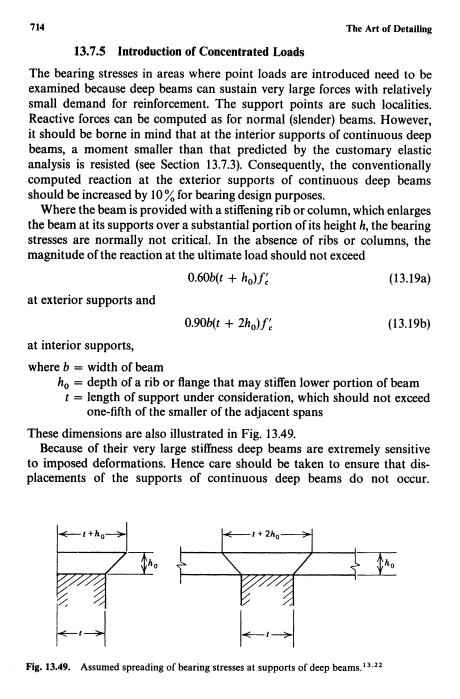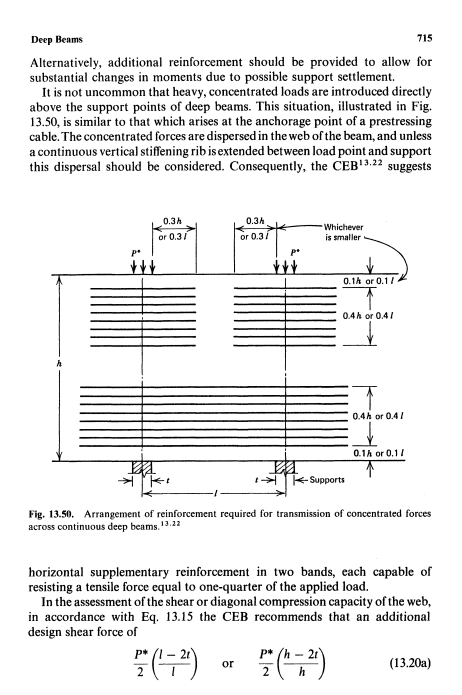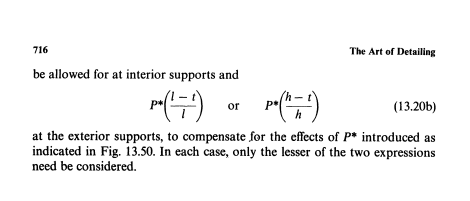tmalik3156
Structural
Good day all.
We are evaluating some deteriorated hammerhead pier caps. The caps would qualify as “deep beams”. We know that for deep beams, design should be by Strut and Tie method (STM), rather than by Sectional method used for shallow beams.
But that’s for design. We are doing analysis here, not design.
If we use Sectional method to determine moment and shear capacity of this pier cap, will that be acceptable?
I think Sectional method is less accurate for deep beams, but is more conservative (lower bound) in determining capacities. Sectional method uses formulas like Vr (shear resistance) = Vc (concrete contribution to resistance) + Vs (steel contribution). Depending on the code you use, Vc and Vs will have certain expressions involving material strength and member geometry.
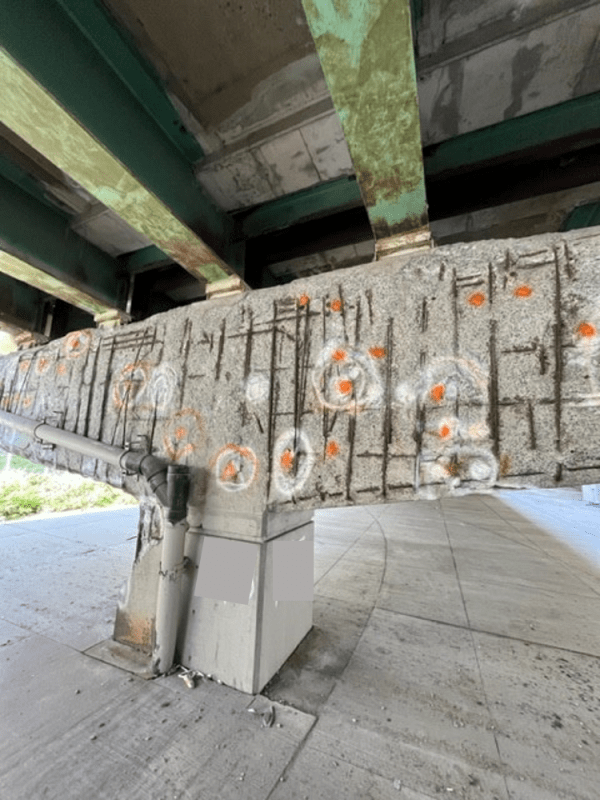
We are evaluating some deteriorated hammerhead pier caps. The caps would qualify as “deep beams”. We know that for deep beams, design should be by Strut and Tie method (STM), rather than by Sectional method used for shallow beams.
But that’s for design. We are doing analysis here, not design.
If we use Sectional method to determine moment and shear capacity of this pier cap, will that be acceptable?
I think Sectional method is less accurate for deep beams, but is more conservative (lower bound) in determining capacities. Sectional method uses formulas like Vr (shear resistance) = Vc (concrete contribution to resistance) + Vs (steel contribution). Depending on the code you use, Vc and Vs will have certain expressions involving material strength and member geometry.


